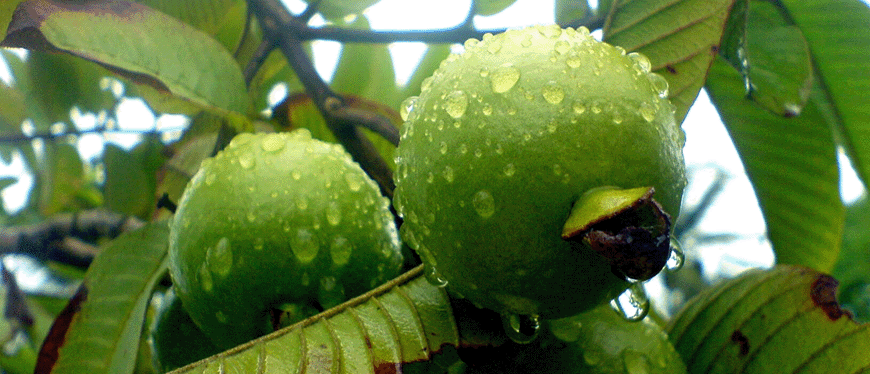Crop Production
Guava (Psidium guajava): In spite of substantial increase in area and production, there is an ample scope for area expansion; due to its precocious and prolific bearing habit, which in turn ensures high returns to the guava growers. True to the type planting material is the most vital component of area expansion.
Spacing and Planting:
-
 Spacing
and Planting: Though guava is
sometimes propagated through seeds, it is not desirable
as seedlings are not true to types. However, seed
propagation may be employed to raise rootstocks. Freshly
extracted mature seeds from ripe fruits are sown in
polythene bags or nursery beds. Individual seedlings can
be transplanted to pots when 10 cm high. These seedlings
will be ready in the 8 to 12 months for budding or
grafting when they attain pencil thickness. Forkert
followed by patch budding is found best for guava.
Veneer grafting and inarching are also successful. It is
also propagated through layering, cuttings and budding.
Spacing
and Planting: Though guava is
sometimes propagated through seeds, it is not desirable
as seedlings are not true to types. However, seed
propagation may be employed to raise rootstocks. Freshly
extracted mature seeds from ripe fruits are sown in
polythene bags or nursery beds. Individual seedlings can
be transplanted to pots when 10 cm high. These seedlings
will be ready in the 8 to 12 months for budding or
grafting when they attain pencil thickness. Forkert
followed by patch budding is found best for guava.
Veneer grafting and inarching are also successful. It is
also propagated through layering, cuttings and budding.

